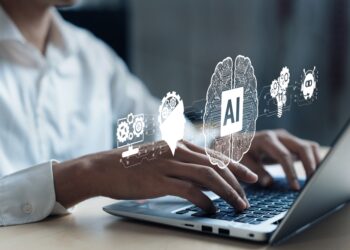Is the concept of autonomous IT very similar to that of autonomous cars?
Self-driving cars are seen as the poster child for autonomous technology. When you say autonomous, it implies three things: self-driving, self-healing and more importantly, self-securing. Yes, self-driving, connected car is a good example of autonomy. Other good examples are bots with natural language processing, and sensor-driven manufacturing processes. Some level of machine learning and AI, on which autonomous IT is based, is already at play, and we encounter these capabilities in our everyday lives and it is going to grow exponentially. By 2020, over 10 million self-driving cars will be on roads globally. Similarly, 50 percent of the world’s enterprise data will be handed autonomously. Also, over 90 percent of business applications will have components of AI embedded into them. These might be technology terminologies, but they have a direct impact on business outcomes in terms of lower cost, lower risk and higher predictability using analytics.
What is Oracle’s vision for autonomous IT?
Our core competence is data. We provide end-to-end, top-to-bottom, technology solutions to businesses of all sizes and public sector. What we have discovered over the past 40-odd years we have been in operation is that customers need access to smarter data, not just faster or bigger data management. We already have the fastest, biggest and competent database environments in the world. We are taking away processes, which are repetitive or prone to human errors, and handing it over to technology. The reason we are able to do this is because of the advancements in AI and deep learning technologies. Today, AI is available to you at a lower cost in a massive way, and we have embedded that into our platforms and services.
Isn’t this like taking RPA to the next level?
When you move from an older technology to a cutting-edge one, you are not creating something out of thin air; it is an advancement of whatever is already out there. As I said earlier, AI is already running through our everyday lives. A case in point is the UAE, one of the most digitally advanced societies in the world where we come across it all the time. But, if you step back a bit and look at the backend, you will see there is still a high cost involved in providing these capabilities. We have massive repositories of data. However, if you were to do a RoI calculation of that data, you’d realise a large portion of that is still not in use.This is why we need autonomous IT operations. Robotics can be your first step in the automation journey and the world of autonomous systems is still evolving.
Could self-driving databases leave DBAs unemployed?
This is a question I get asked a lot and the answer is absolutely not. If you look at what a DBA does, 80 percent of their time is spent on helping CIOs to keep the lights on. They are checking data, making audit trails and troubleshooting if there is a breach. These are mundane tasks and our analysis shows that out of 10 odd tasks DBAs perform today, 8 are unnecessary activities. Our autonomous data warehouse cloud will take away these tedious tasks so that DBAs are not burdened with things that can go wrong due to human intervention. They will be doing more high-value tasks with the data they have, and they can even evolve to become data scientists.
Gartner predicts that by 2022, cybersecurity rating of an enterprise will become as equally important as credit rating. The DBA job is critical to this – if you have an autonomous environment which is self-securing, DBAs can find ways and means to stop cyber breaches before they could happen. In short, DBAs and the entire IT community can play a bigger role and contribute to business outcomes.
You have been offering adaptive intelligence apps around ERP, HCM and SCM from 2016. Was that the beginning of Oracle’s autonomous journey?
We are the leader in innovative digital technologies that transform businesses. We were the first to embed AI into business applications, and we called it adaptive intelligence. We have been implementing this for our customers such as DP World, Apparel Group, UAE Government, to name a few. Now, we have moved into more precise autonomous services and we are providing it at the platform level, not just application and SaaS levels.
If you look at the history of data warehousing, there was a time when we used to have sequential files and it was a nightmare to glean any insights from it. We came up with the concept of a matrix of data pulled from multiple source systems, which we called the data warehouse. Every night, an enterprise would extract data from multiple sources and create a grid-like environment, which would feed data directly to executive dashboards. Then we went from nightly updates to hourly to near real-time updates.
However, data warehousing has not seen any technology enhancement for almost a decade. It is still as cumbersome as before and when I meet customers, we spend more time talking about how to manage their enterprise data warehouses, which shouldn’t be the case. With our autonomous data warehouse cloud, we have done away with this problem and you don’t need to worry about how you should store your data and back it up. Now, the configuration of a data warehouse, which used to take three hours can be done in 15 minutes. Our autonomous data warehouse paired with autonomous analytics cloud and the upcoming data science cloud will allow you to quickly extract data insights and help you make business decisions in real time, all completely automated.










Discussion about this post